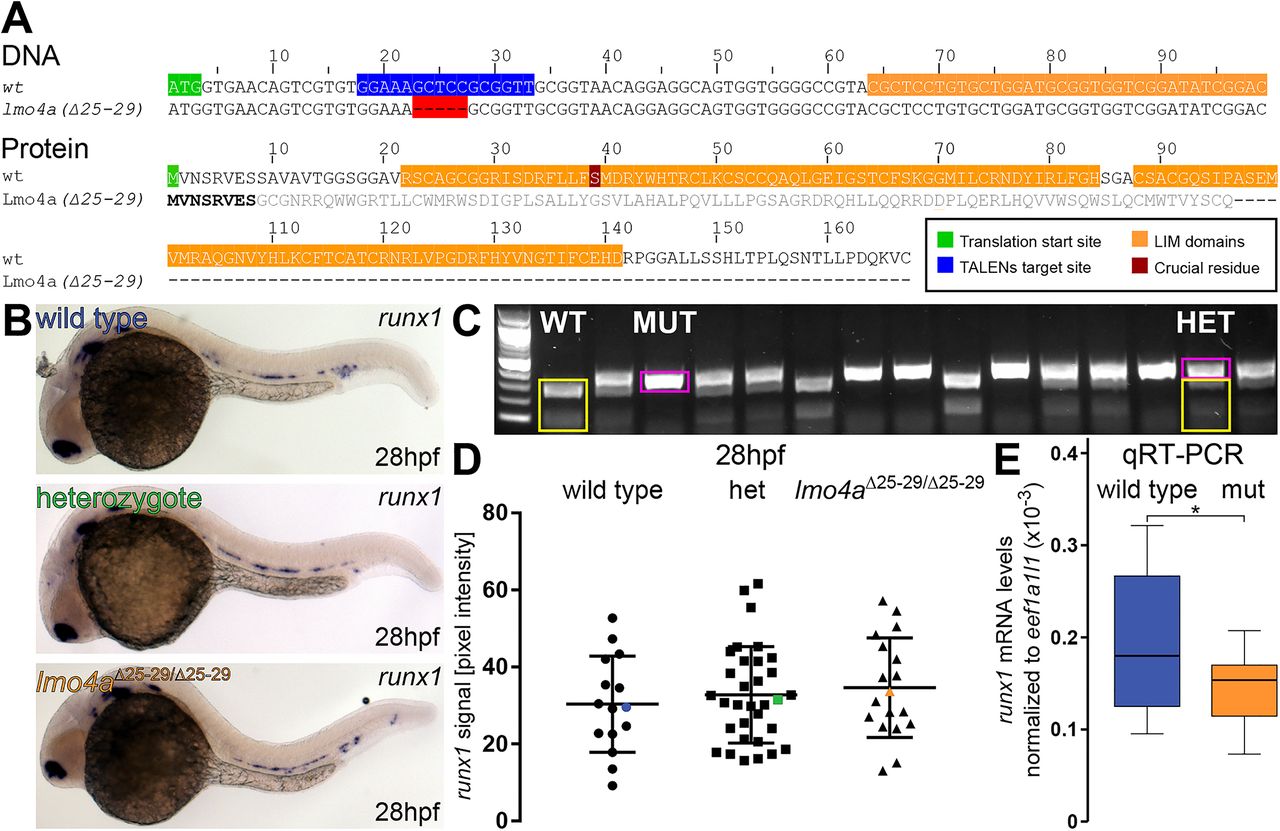Fig. 4
Runx1 levels detected by ISH are not affected in lmo4a mutants. (A) TALENs were designed to a region (blue) ∼20 bp downstream of the lmo4a translation start site (green). Isolated mutant alleles carry 5 bp deletions (Δ25-29) (red gaps) upstream of the conserved LIM domains (orange), resulting in a frameshift after S8. The resulting mutant protein is predicted to lack the LIM domains, including the crucial S39 (dark red). (B) Representative images of ISH for runx1 in 28 hpf wild-type (blue), heterozygous (green) and lmo4aΔ25-29/Δ25-29 (orange) embryos, showing the expression in the dorsal aorta. (C) 2% agarose gel showing representative genotypes of wild-type (WT), heterozygous (HET) and mutant (MUT) lmo4a embryos, distinguished by RFLP. Yellow: wild-type 258 bp+87 bp bands, pink: 340 bp mutant band. First lane from the left: 100 bp DNA ladder. (D) Quantification of the runx1 mRNA signal, detected by ISH, from 28 hpf wild-type (n=15), heterozygous lmo4a+/− (het) (n=34) and lmo4aΔ25-29/Δ25-29 mutant (n=18) embryos from one clutch shows no significant difference in runx1 pixel intensity among the different genotypes (ANOVA, P>0.6). The coefficients of variation are 41%, 38% and 37% for wild-type, heterozygote and mutant groups, respectively. Blue, green and orange data point correspond to the example images from panel B. The bars represent mean±s.d. (E) Boxplots displaying normalised runx1 mRNA levels (2−ΔCt) in single wild-type (blue; n=12) and lmo4aΔ25-29/Δ25-29 (mut, orange; n=12) embryos, measured by qRT-PCR, showing decreased levels of runx1 in the mutants compared to wild type. *P<0.05 (t-test).

